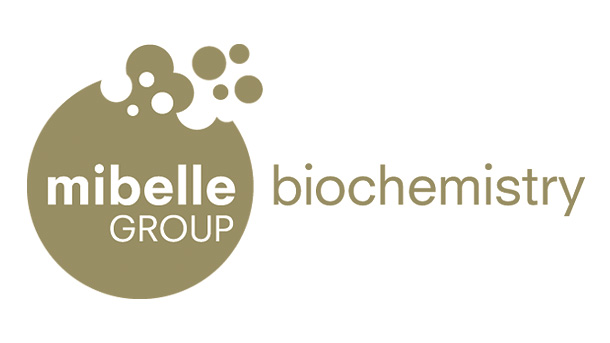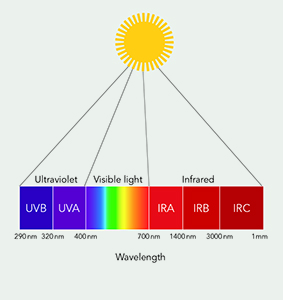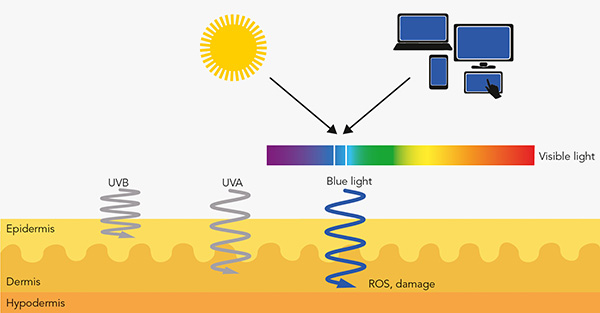Promotional Features
Blue light and infrared: how to protect the skin from these indoor and outdoor threats
Infrared – the underestimated free radical generator
Infrared (IR) is invisible to the human eye but we can feel it as heat. Compared to UV, IR is characterized by long wavelengths of low energy. The sun radiation that reaches the skin consists of 7% UV, 39% visible light and 54% IR. IR is divided into the following three categories: IRA (from 760 nm to 1400 nm), also called near infrared, represents the fraction that is the closest to the red visible light, IRB and IRC (from 1440 nm to 1 mm). Unlike IRB and IRC, IRA penetrates deep into the skin (two-thirds reach the dermis) and does not significantly increase the skin temperature.
Recent studies have shown that infrared, especially near IR, induces a significant production of free radicals in the dermis and diminishes the skin’s antioxidant capacity. Importantly, sunscreens used in sun products neither filter nor reflect IR radiation and do not prevent the formation of IR-induced free radicals. This is especially an issue when - despite using sun protection products - we expose our skin for several hours to intense sunlight (i.e. when at the beach). Indeed, this type of protection blocks the appearance of the sunburn, which is a signal that the skin has started to experience damage. Sun products with a high SPF allow us to prolong our sun exposure by preventing a part of the damage induced by UVB and UVA, however, they also permit the accumulation of damage induced by other radiations such as IR.
Like UV, IRA radiation generates an important quantity of reactive oxygen species (ROS). However, the underlying mechanism of IRA differs from that of UV: UV generates ROS directly in the cell membrane while IRA induces their formation mainly in the mitochondria. These ROS will ultimately leak into the cytoplasm and induce a signaling cascade which leads to the upregulation of MMP-1, which is an enzyme that destroys the fibers of collagen type 1, as well as to the downregulation of collagen type 1. This means that existing collagen is damaged and not sufficiently replaced as the production of new collagen is reduced. Therefore, IRA is an important contributor to the photo-aging process which accelerates the appearance of wrinkles, age spots and discoloration and makes the skin lose its firmness and elasticity. In addition, the ROS generated by IR disturb the function of mitochondria. As a result, this “powerhouse” produces less ATP (energy) and this has an impact on the function of cells and tissues.
Therefore, whilst mitochondria are the main target of IR, the damages it induces (destruction of collagen and reduced energy production) affect the entire cell and tissue.
Blue light – harmful radiation from modern technology
Blue light, which is also called high-energy visible light (HEV), refers to light wavelengths between 390 and 500 nm. Therefore, blue light penetrates deeper into the skin than UVA and UVB light, and also has a higher level of energy than IR light which means there is a greater potential for skin damage to occur.
The need for protection from blue light has arisen in recent years given that the source of blue light is not only the sun: digital screens from smartphones, computers and televisions, as well as LED lamps, emit a high amount of blue light wavelengths. This is especially an issue as blue light is most efficient at inhibiting melatonin, a hormone that regulates the circadian rhythm, which is the body’s natural clock. Therefore, excessive use of screen devices, especially before bedtime, can lead to changes in sleep patterns and result in less quality sleep.
In addition to disrupting the sleep cycle, HEV irradiation also negatively affects the skin by generating ROS in the skin which cause oxidative damage and contribute to photo-aging. Additionally, it was shown that blue light irradiation delays skin barrier recovery. Therefore, it is very important to protect skin from the harmful effects of blue light.
How to protect the skin from infrared and blue light
To protect the skin from the harmful effects of infrared, blue light and pollution, Mibelle Biochemistry has developed InfraGuard, which combines an extract of organic sunflower sprouts with Caesalpinia spinosa tannins. The sunflower sprout extract was found to support overall health of mitochondria and the Caesalpinia spinosa tannins are highly efficient, stable antioxidants.
In vitro studies demonstrated a protective effect of InfraGuard for skin cells irradiated with infrared and HEV light as well as for cells exposed to particulate matter. Clinical tests carried out during the summer holidays suggested IR adversely affects our skin as UV protection with SPF30 alone did not protect against the loss of firmness and density. However, upgrading the SPF30 cream with InfraGuard significantly improved these skin parameters.
In vitro and in vivo studies suggest that InfraGuard:
• Blocks IR and blue light-induced free radical formation
• Protects mitochondrial DNA
• Inhibits light-induced skin aging
• Prevents the loss of skin density upon sun exposure








